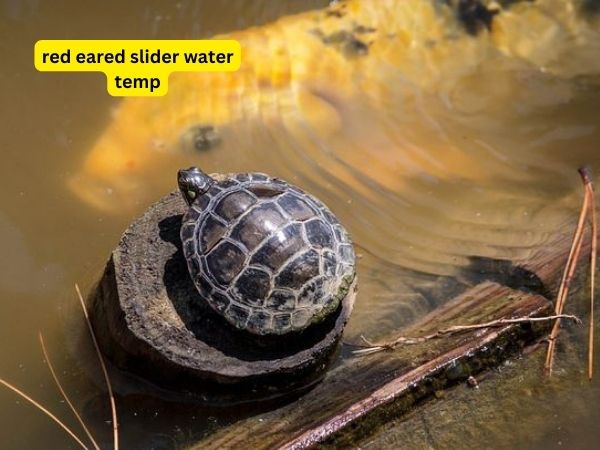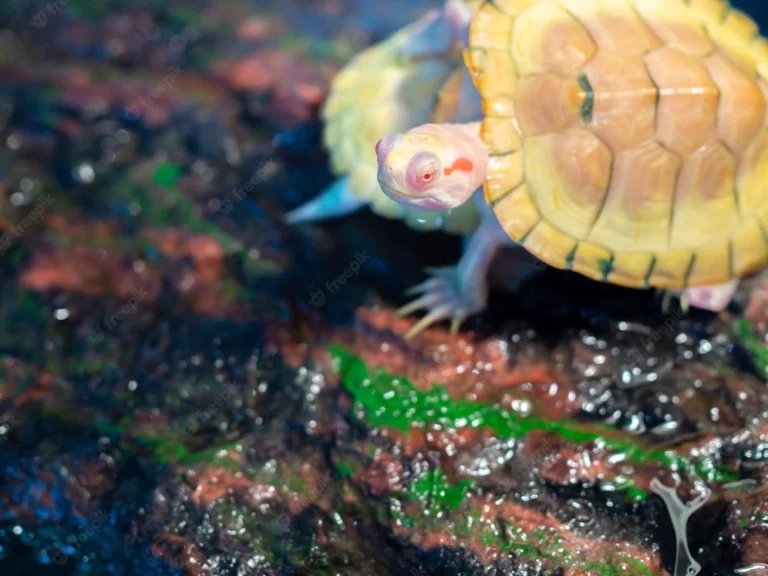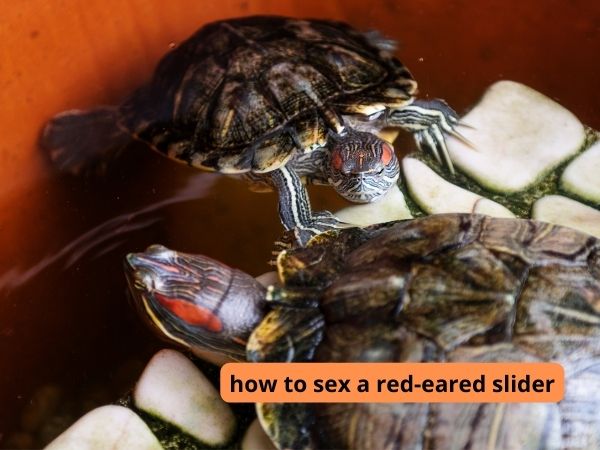Filtration Systems For Red-eared Slider Tanks
Today we discuss Filtration Systems For Red-eared Slider Tanks. If you have a red-eared slider tank, you know how important it is to maintain a clean and healthy environment for these adorable turtles. One crucial aspect of turtle tank maintenance is having an effective filtration system in place. In this article, we’ll explore the world of filtration systems for red-eared slider tanks, and discover how they can help keep the water clean and your turtles happy and thriving.
When it comes to choosing the right filtration system for your red-eared slider tank, there are several factors to consider. The size of your tank, the number of turtles you have, and the amount of waste they produce all play a role in determining the type and capacity of the filtration system you need. But don’t worry, we’ll break it all down for you and make it easy to understand.
Having a top-notch filtration system in your red-eared slider tank is not only beneficial for your turtles’ well-being, but it also makes your life as a pet owner much easier. With the right filtration system in place, you can spend less time worrying about water quality and more time enjoying the company of your adorable aquatic pets. So let’s dive in and explore the world of filtration systems for red-eared slider tanks!
Filtration Systems for Red-Eared Slider Tanks: A Comprehensive Guide
Red-eared sliders are popular pet turtles known for their vibrant colors and friendly personalities. As pet owners, it is important to create a healthy and clean environment for these aquatic turtles to thrive. One crucial aspect of maintaining a suitable habitat is investing in a proper filtration system for their tanks. In this guide, we will explore the different types of filtration systems available for red-eared slider tanks and provide insights on how to choose the right one for your pet’s needs.
The Importance of Filtration Systems for Red-Eared Slider Tanks
Keeping a red-eared slider is a commitment that goes beyond simply providing food and shelter. These turtles produce waste, shed skin, and even release toxins, which can quickly accumulate in the tank. Without an efficient filtration system, the water quality will quickly deteriorate, posing a serious risk to your pet’s health. Filtration systems not only remove physical debris and waste but also maintain proper chemical and biological balances in the water. This helps reduce the risk of bacterial and fungal infections and ensures a clean and safe environment for your red-eared slider to thrive.
The Different Types of Filtration Systems:
There are several types of filtration systems available for red-eared slider tanks. It is important to understand how each system works and which one best fits your needs:
1. Mechanical Filtration
Mechanical filtration systems are designed to physically remove debris and particulate matter from the water. This is typically achieved through a combination of filter pads, sponges, or floss that trap larger particles, preventing them from re-entering the tank. Mechanical filtration is essential in maintaining water clarity and preventing clogs in other types of filtration systems.
2. Chemical Filtration
Chemical filtration systems utilize substances like activated carbon or zeolite to remove impurities and toxins from the water. These substances have the ability to absorb and neutralize harmful chemicals, organic compounds, and odors. Chemical filtration is crucial in enhancing water quality and eliminating harmful substances that cannot be removed through mechanical filtration alone.
3. Biological Filtration
Biological filtration systems promote the growth of beneficial bacteria that naturally break down harmful ammonia and nitrite compounds in the water. These bacteria convert ammonia, a toxic waste product excreted by turtles, into nitrite and then into relatively harmless nitrate. Biological filtration is essential in maintaining a stable and healthy nitrogen cycle within the tank.
4. Combination Filtration
Most modern filtration systems for red-eared slider tanks combine mechanical, chemical, and biological filtration into a single unit. These all-in-one systems provide comprehensive water purification, ensuring optimal water quality for your pet turtle. Combination filtration systems are convenient and efficient, requiring less maintenance compared to individual filtration units.
5. External Filtration
External filtration systems are placed outside the tank and connected via tubes and hoses. These systems offer increased water circulation, larger filter media capacity, and easier maintenance compared to internal filtration systems. External filters are particularly beneficial for larger tanks or setups with multiple turtle enclosures.
6. Internal Filtration
Internal filtration systems, also known as submersible or hang-on filters, are installed directly inside the tank. These compact units are suitable for smaller tanks and provide effective filtration while occupying minimal space. Internal filters are easy to install and maintain, making them an ideal choice for beginners.
7. Wet/Dry Filtration
Wet/dry filtration systems are highly efficient and provide superior biological filtration. These systems use a combination of submerged and exposed filter media to maximize the surface area available for beneficial bacteria to grow. Wet/dry filtration is commonly used in large setups or tanks with high bioloads, as they handle waste effectively and maintain excellent water quality.
Now that we have explored the different types of filtration systems available, it is crucial to understand the specific needs and requirements of red-eared sliders. In the next sections, we will dive deeper into the factors to consider when choosing a filtration system, maintenance tips, and the benefits of investing in a high-quality system.
Key Takeaways: Filtration systems for red-eared slider tanks
- Red-eared slider tanks need proper filtration systems to keep the water clean and healthy for your pet.
- A good filtration system should include mechanical, biological, and chemical filtration to remove debris, harmful substances, and ammonia.
- Choose a canister or external filter that can accommodate the size of your red-eared slider tank.
- Regular maintenance, such as cleaning and replacing filter media, is necessary to ensure the effectiveness of the filtration system.
- Investing in a high-quality filtration system will contribute to the overall well-being and longevity of your red-eared slider.
Faqs for Filtration Systems For Red-eared Slider Tanks:
A filtration system is extremely important for a red-eared slider tank. These turtles produce a significant amount of waste, which can quickly pollute the water if not properly filtered. A filtration system helps remove harmful toxins, excess nutrients, and debris from the water, creating a clean and healthy environment for your red-eared slider to thrive in.
Without a proper filtration system, the water in the tank can quickly become dirty and unsuitable for your turtle, leading to health issues such as bacterial infections and shell problems. Investing in a good filtration system not only keeps your red-eared slider happy and healthy but also saves you time on frequent water changes.
When it comes to choosing a filtration system for your red-eared slider tank, a combination of mechanical, biological, and chemical filtration is ideal. Mechanical filtration removes physical debris, such as uneaten food and turtle waste, from the water. Biological filtration utilizes beneficial bacteria to break down harmful ammonia and nitrites, converting them into less toxic nitrates. Chemical filtration, usually performed through activated carbon, helps remove chemicals and odors from the water.
You can achieve this multi-filtration approach with a canister filter, which provides all three types of filtration in one unit. Canister filters are known for their superior filtration capabilities and large media capacity, making them suitable for red-eared sliders’ tanks. However, it’s important to select a canister filter that is appropriately sized for your tank, based on its capacity and flow rate.
Cleaning the filter regularly is essential to maintain its efficiency and prevent the build-up of debris that can clog the filter media. As a general rule of thumb, you should clean the filter every 4-6 weeks. However, the frequency might vary depending on factors such as the tank size, the number of turtles, and the amount of waste generated. If you notice reduced water flow or an unpleasant odor coming from the tank, it might be a sign that the filter needs cleaning.
When cleaning the filter, rinse the mechanical media in dechlorinated water to remove debris. It’s important to avoid rinsing the biological media too thoroughly, as you want to preserve the beneficial bacteria. Instead, gently swish the biological media in tank water to dislodge any excess debris. Remember to follow the manufacturer’s instructions for your specific filtration system to ensure proper cleaning and maintenance.
4. Can I use a sponge filter for a red-eared slider tank?
Sponge filters are commonly used in turtle tanks, including those of red-eared sliders. These filters provide biological filtration by hosting beneficial bacteria, while the sponge material helps with mechanical filtration by trapping debris. Sponge filters are often considered beneficial for hatchlings or smaller turtles due to their gentle water flow, which prevents baby turtles from getting sucked into the filter. However, for larger red-eared sliders or tanks with a higher waste load, a sponge filter alone may not be sufficient.
If you decide to use a sponge filter, it’s important to regularly clean and maintain it. The sponge should be rinsed or replaced regularly to prevent clogging and maintain optimal filtration. Additionally, it’s a good idea to supplement the sponge filter with other forms of filtration, such as a canister filter or a hang-on-back filter, to ensure adequate water quality.
There are a few ways to determine if your filtration system is working effectively. First, observe the water clarity. If the water appears clear and free of debris, it’s a good sign that the mechanical filtration is doing its job. Additionally, monitor the water parameters regularly using a test kit. Low levels of ammonia and nitrites and stable nitrates indicate that the biological filtration is working effectively.
Another way to assess the filtration system is by observing your red-eared slider’s behavior and overall health. If your turtle is active, has a healthy appetite, and its shell looks clean and free of any abnormalities, it’s likely that the filtration system is providing a suitable environment for your pet. However, if you notice any signs of illness, such as lethargy, loss of appetite, or shell discoloration, it could be an indication that the filtration system needs adjustments or maintenance.
Summary:
Here’s what you need to know about filtration systems for red-eared slider tanks. These systems help keep the water clean and healthy for your turtles.
First, it’s important to have a filter that can both remove debris and chemicals from the water. This will prevent your tank from becoming dirty and help maintain good water quality. Second, choose a filter that matches the size of your tank. This ensures that the water is properly circulated and filtered. Finally, make sure to clean and maintain your filter regularly to keep it working effectively.
Remember, a good filtration system is crucial for your red-eared slider’s health and happiness. So take care of your turtle and its tank with a proper filtration system!



